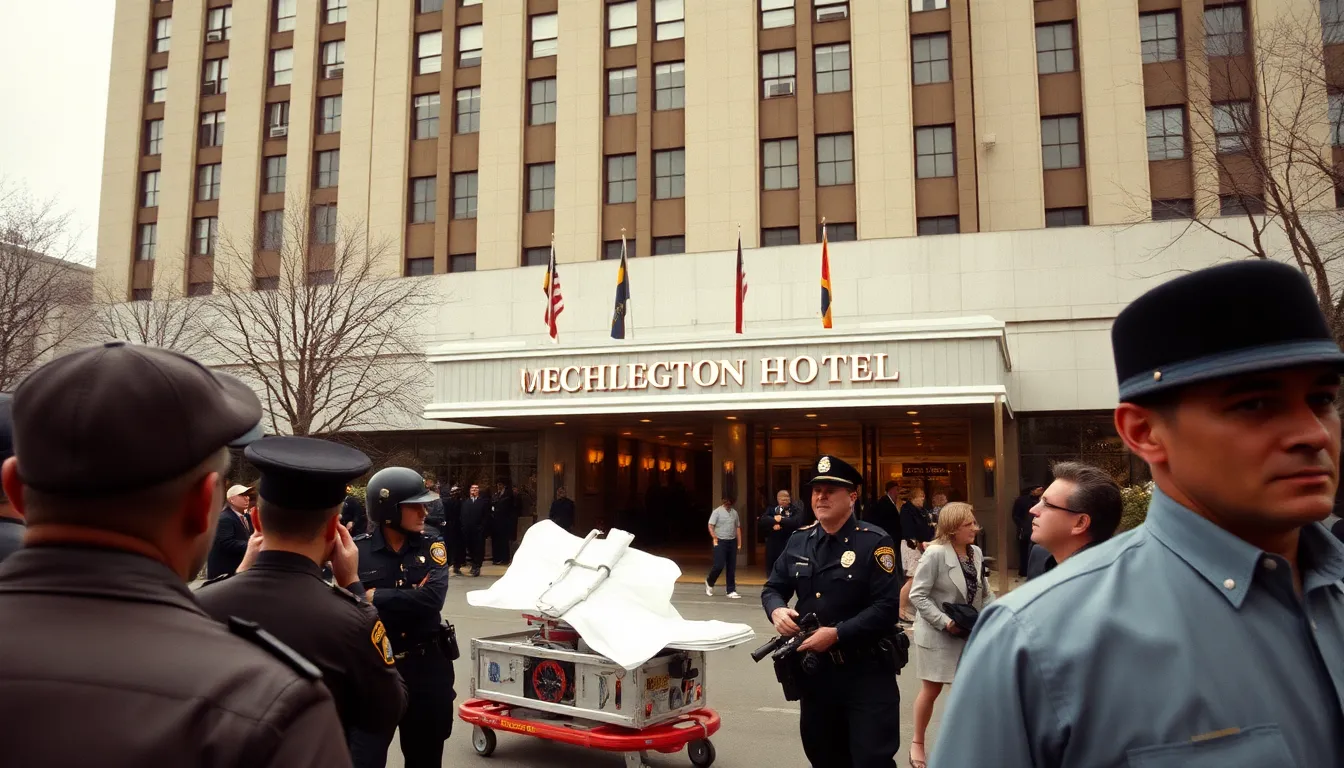On March 30, 1981, the world held its breath as an unexpected twist unfolded in American history. Just a few short months into his presidency, Ronald Reagan found himself in the crosshairs of an assassination attempt that would not only change his life but also shape the political landscape. Picture this: a sunny spring day in Washington, D.C., where the only thing hotter than the weather was the drama about to unfold.
As Reagan stepped out to greet supporters, a gunman fired six shots, leaving the nation in shock. Fortunately, the former actor-turned-president had a few tricks up his sleeve and a bit of luck on his side. This incident serves as a reminder of how quickly life can change and how even the most unexpected events can spark conversations that last for decades. Dive into the details of that fateful day and explore the impact it had on America.
Table of Contents
ToggleOverview of the Incident
The assassination attempt on President Ronald Reagan took place on March 30, 1981. Located in Washington, D.C., this event unfolded as Reagan greeted supporters outside the Washington Hilton Hotel. John Hinckley Jr. fired six shots using a .22 caliber revolver, striking Reagan and three others. One bullet ricocheted off the presidential limousine and hit Reagan under his left arm, damaging a lung and causing severe blood loss.
Witnesses reported scenes of chaos as Secret Service agents quickly responded. They rushed Reagan to George Washington University Hospital, where medical staff performed emergency surgery. The swift action of law enforcement and emergency responders played a crucial role in saving his life.
Reagan’s press secretary, James Brady, suffered a severe head injury during the attack, which left him permanently disabled. A police officer and a Secret Service agent also sustained injuries, reflecting the widespread impact of the incident. In total, four people were wounded, highlighting the gravity of the attack.
Hinckley aimed to impress actress Jodie Foster, not realizing the broader implications of his actions. His motivations stemmed from a psychological obsession rather than a political agenda. After a lengthy trial, Hinckley was found not guilty by reason of insanity and committed to a mental institution.
The aftermath of the assassination attempt significantly impacted Reagan’s presidency. National security policy underwent notable changes, leading to increased security for public figures. This incident led to greater awareness regarding gun control and the safety of elected officials. Events on that fateful day forever altered the landscape of American politics and public safety.
Timeline of Events

Reagan’s assassination attempt occurred on March 30, 1981, a pivotal day in American history.
The Day of the Shooting
That morning, Reagan began the day with a speech at the Washington Hilton Hotel. Around 2:27 PM, as he exited the hotel, John Hinckley Jr. approached him. Six shots rang out, striking Reagan and others. One bullet hit Reagan’s chest, causing severe lung damage. Immediate assistance came from Secret Service agents and medical personnel on the scene. After the incident, Reagan was rushed to George Washington University Hospital, where he underwent surgery. Remarkably, the quick actions of those around him saved his life.
Key Figures Involved
John Hinckley Jr. played a central role in the attack as the shooter. Ronald Reagan, the sitting president, was the primary target. Press Secretary James Brady also suffered life-altering injuries, becoming a symbol for gun control advocacy. Several law enforcement officers responded, including a police officer named Thomas Delahanty, who was also injured. Secret Service agents reacted swiftly, including Jerry Parr, who helped shield Reagan. Each figure contributed to the unfolding narrative that day, cementing the event’s historical significance.
Aftermath of the Shooting
The aftermath of Ronald Reagan’s shooting profoundly shaped the nation and his presidency. Immediate responses from the public and officials showcased a sense of disbelief and urgency.
Immediate Reactions
Shock permeated the country as news spread about the assassination attempt on Reagan. Televised coverage captured the chaotic scene outside the Washington Hilton, where bystanders witnessed the aftermath unfolding. Media outlets launched into round-the-clock reporting, and public sentiment oscillated between fear and support for the President. In Congress, lawmakers expressed solidarity through statements and actions, prioritizing national security discussions. First responders earned commendations for their rapid interventions. Each moment of the incident illustrated the gravity of the situation, highlighting the vulnerability of public figures.
Long-term Impact on Reagan’s Presidency
The shooting fundamentally altered how Reagan approached governance and interaction with the public. Security measures tightened immediately, initiating protocols that enhanced safety for the President and others. National discussions on gun control intensified, prompting legislative efforts aimed at addressing gun violence. Although Reagan maintained his charisma, he became more cautious in public settings. Furthermore, the event sparked broader public engagement in political discourse, as citizens reflected on the necessity of security in democracy. Long-term effects on Reagan’s presidency included a deeper focus on national security policies, shaping America’s approach to protecting its leaders and citizens alike.
Public and Historical Significance
The assassination attempt on Ronald Reagan marked a pivotal moment in U.S. history. This event triggered widespread shock across the nation. It led to immediate discussions about national security protocols. Lawmakers prioritized enhancing security measures for elected officials, affecting policies for future administrations.
Public sentiment revealed a mix of fear and support for the President. Although media coverage focused on the chaotic aftermath, it also highlighted swift actions by first responders. Those within proximity during the shooting played crucial roles, demonstrating the importance of rapid medical intervention. George Washington University Hospital’s readiness facilitated quick surgical response, ensuring Reagan survived the life-threatening injuries.
Changes in public gun policy discussions emerged following the incident. Interest in gun control grew as individuals reacted not only to the shooting itself but also to its implications for democratic safety. Transitioning to more cautious public appearances, Reagan remained charismatic while adjusting to a new reality of vulnerability.
Psychological motivations behind John Hinckley Jr.’s actions prompted extensive public and academic analysis. His obsession with actress Jodie Foster attracted media attention, highlighting the need for understanding the intersection of mental health and violence. Such discussions influenced how society perceived threats to public figures.
Overall, the attempted assassination of Ronald Reagan transformed American political discourse. Discussions encompassing national security and personal safety gained momentum in the wake of this shocking event. Long-lasting effects reshaped congressional actions toward safeguarding leaders and igniting conversations on civic responsibility among citizens.
The attempted assassination of Ronald Reagan on March 30, 1981, remains a significant event in American history. It not only tested the resilience of a newly elected president but also highlighted the critical importance of security for public officials. The incident prompted a national dialogue on gun control and the safety of democracy itself.
Reagan’s survival and the subsequent changes in security protocols reshaped how future administrations would approach public safety. The lasting impact of that day continues to resonate in discussions about political security and civic responsibility. As the nation reflects on this pivotal moment, it serves as a reminder of the fragility of leadership and the ongoing challenges faced in safeguarding democracy.


